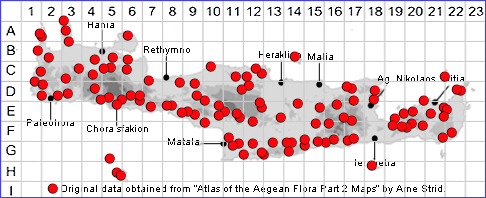SPECIES DESCRIPTION
VICIA CRETICA
Family and Genus:- See- LEGUMINOSAE/Sect. CRACCA
Common Names:- Cretan vetch
Homotypic Synonyms:- None.
Meaning:- Vicia (L) Binder, to bind, a name used by the Roman naturalist and
philosopher Pliny for vetch.
Cretica (L) From Crete, Cretan.
General description:- Small, slender, annual.
Stems:-
1) 10-30 cm., clambering, pubescent.
Leaves:-
1) Leaflets, usually 2-5 pairs, 4-10 x 1-4 mm, narrow-elongated to elliptical, tendrils
branched or unbranched.
2) Stipules, entire.
Flowers:-
1) Racemes, 1- to 6-flowered.
2) Calyx, slightly gibbous at the base;
a) teeth. unequal, shorter or the lower longer than tube.
3) Corolla, 9-20 mm, white or yellowish, with a purple tip.
a) standard, usually red or bright pink outside.
b) wings, and inside the standard, reddish-purple.
4) Style, dorsiventrally compressed.
Fruit:-
1) Legume, 20-30 x 5·5-8 mm, brown, short-stipitate, glabrous or sparsely
pubescent.
2) Seeds, 4-5; hilum 1/15 of the circumference.
Key features:-
1) Stipules entire.
2) Calyx, strongly gibbous at the base.
3) Corolla, not more than 20 mm, white or yellowish with a purple tip.
4) Leaflets 1-5 pairs, 4-10 mm.
5) Racemes, up to 40 flowered.
Habitat:- Dry open shrubby vegetation on rocky limestone slopes, also on small
islands, frequently entangled and protected in spiny bushes. 0-800(-1450) m.
Distribution:- From Crete and Greece eastwards, including Cyprus. Widespread
and common on Crete.
Flowering time:- Mar to early June.
Photos by:- Steve Lenton
Status:-
Protection status (for threatened species): Greek Presidential Decree 67/1981

